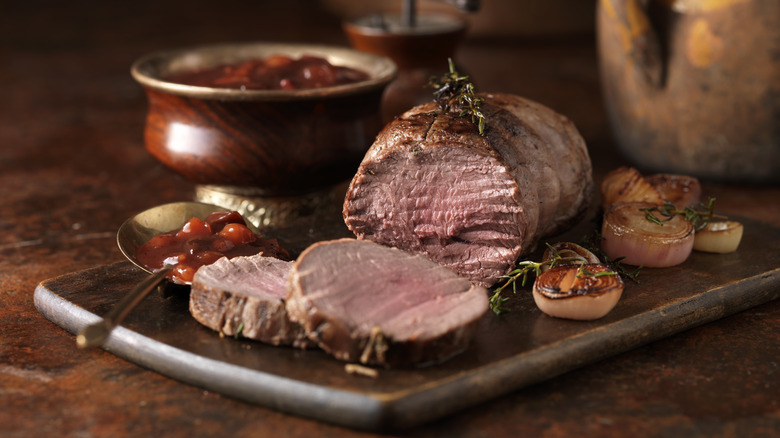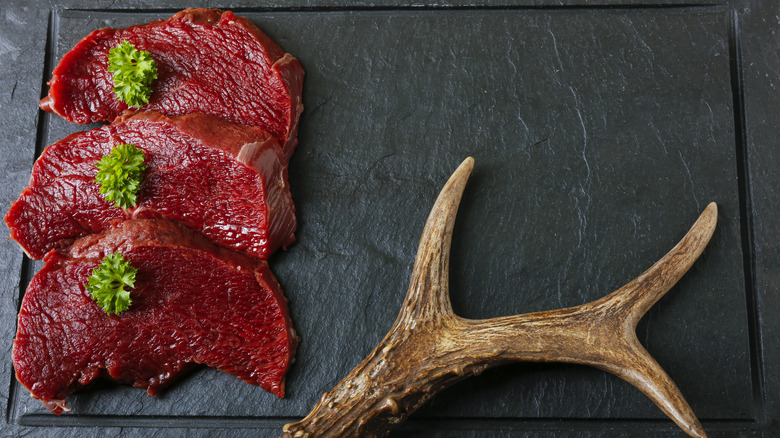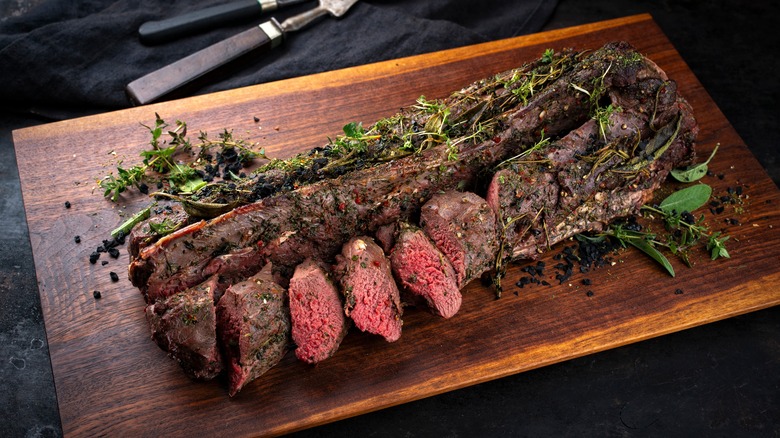Autumn Is The Best Time Of Year For Eating This Underrated Meat
We all know that fruits and vegetables are seasonal, but did you know that meat can be seasonal, too? Not only is meat's popularity often periodic, with turkey sales rising around Thanksgiving and the same goes for ham during the holidays, but the quality of the meat is seasonal as well. Growth and mating cycles influence when meat is in its prime, such as with wild birds — spring is great for eating ducks and geese because they often breed and feed at that time. These combined factors of popularity and quality determine the best season for different meats.
One meat that sees less incorporation into dishes but is worthy of your attention is venison, and there's no better season to try it in than autumn. It's a rare meat because some types of deer are protected and venison requires a USDA inspection before it can be sold. However, it becomes more widely available during the fall, which in turn makes it cheaper, too. Additionally, during the autumn, venison tastes better and is of higher quality.
Why autumn is the best season for venison
Starting in late summer and running through the fall, particularly between August and November (though it varies by state), is deer hunting season. Deer can be pricier than other red meats, which means that buying venison in autumn (when it is cheaper due to higher availability) is a cost-effective way to get ahold of this underrated meat. Shopping during hunting season also means that wild venison is more widely available, not just the farmed variety. Wild deer tend to be leaner and have a more varied diet, which leads to a firmer texture as well as a stronger "gamey" flavor. Farmed meat, on the other hand, tends to have a milder, more uniform flavor profile and softer texture due to less muscle development from residing in an enclosed space and lack of diet variety.
Not only is venison meat cheaper and more varied in the autumn, but it also tastes better because of its breeding and growth cycles. In particular, the best time to eat venison is right before its mating season, which begins late autumn and lasts until early winter. Since deer have just begun scouting out mates during this period, their increased activity results in higher muscle mass and less fat, which tends to taste bitter. Deer meat also has more hormones when mating season is in full fledge, which negatively affects the flavor. Once you've acquired your venison meat for the fall, it's time to put it to use.
How to prepare and cook venison
Since the muscle tissue in venison keeps the meat firm, it's best to tenderize the meat with a kitchen hammer or similar tool before cooking. The game meat is lean, so it's a good idea to rub the meat with fat, such as oil or butter, to help keep it moist and flavorful. If you dislike gamey flavors, trimming the fat of the meat will help mellow its taste. Additionally, a flavorful marinade or overnight soak in salt water or milk will soften the meat and tame its gamey flavor. Be careful of seasoning the venison with salt before cooking because it can remove moisture from the meat.
Once marinated and tenderized, your venison will be ready to cook, though keep in mind that different cuts require different cooking methods. Smaller, tender cuts of rib and loin are best if pan-fried, grilled, or broiled. These lean cuts will cook quickly, so make sure to use a thermometer to avoid overcooking it (venison should cooked to an internal temperature of 165 degrees Fahrenheit to kill bacteria), and the same goes for ground meat with recipes like venison burgers with Roquefort cheese. For tougher cuts such as the round and rump, slow-cooking or braising is your best bet, which will help turn these cuts into tender, delicious meals. So move over turkey, venison is the new contender for the best meat to try this fall!


